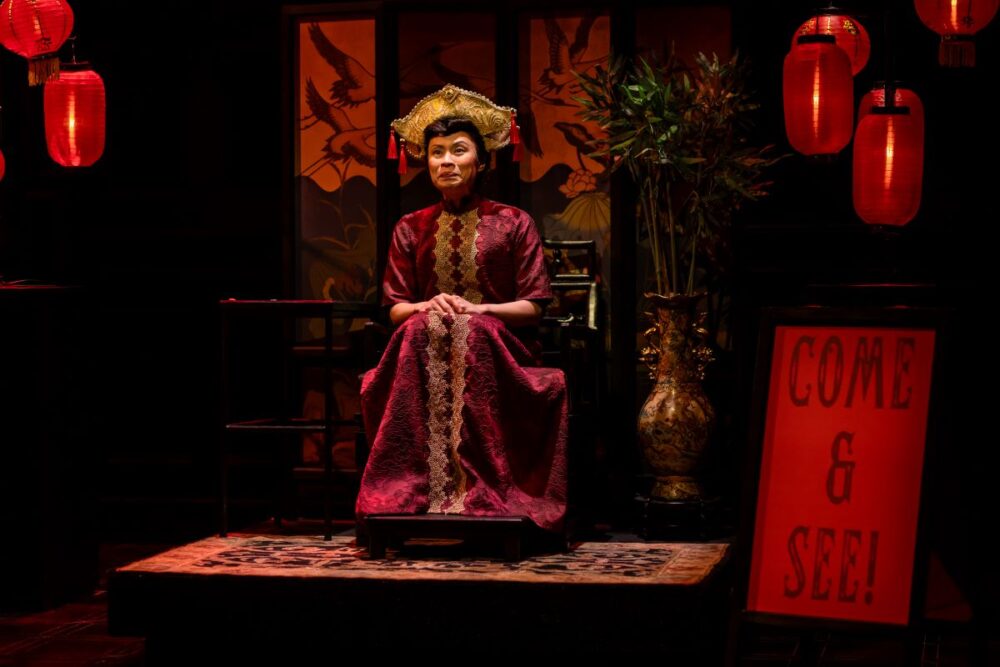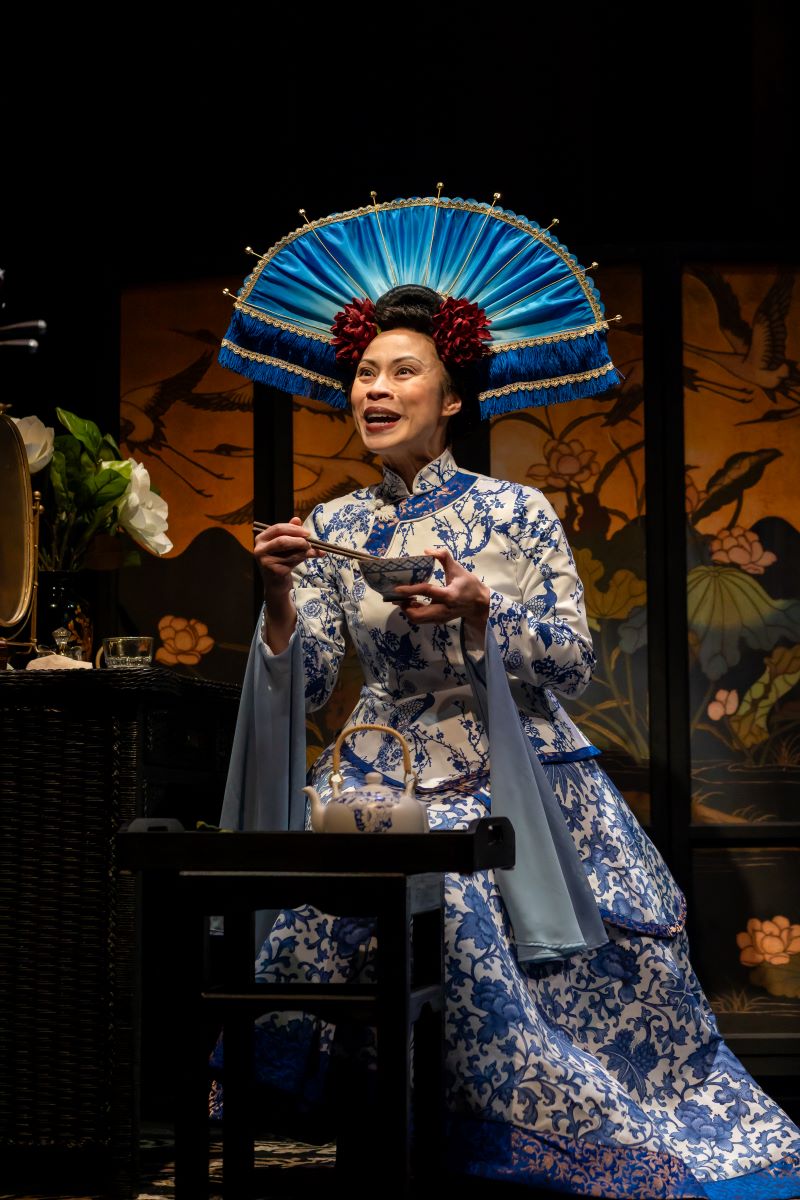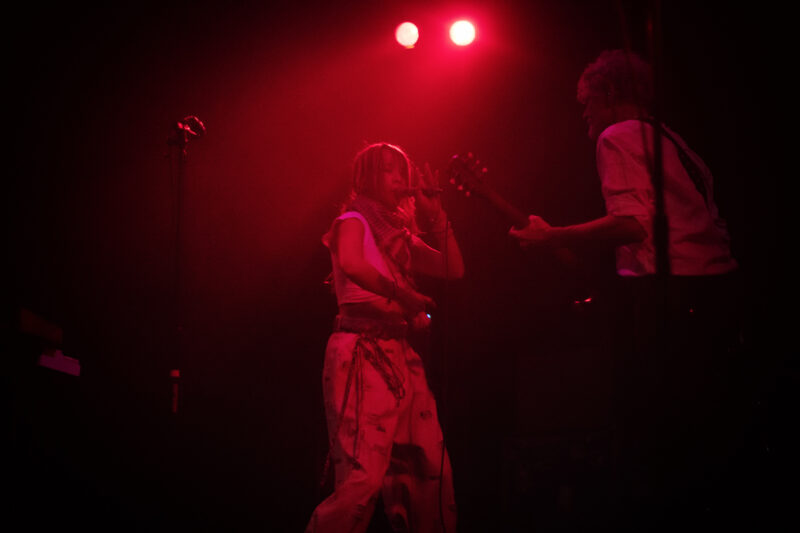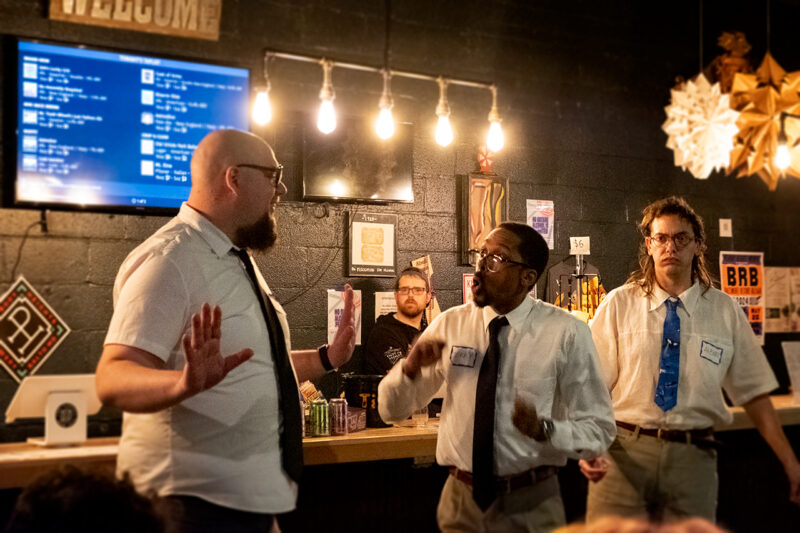The Chinese Lady, by Lloyd Suh, has two objectives, and the fine production at Everyman Theatre addresses them poignantly. The two-person cast, Tuyết Thị Phạm (Afong Moy) and Đavid Lee Huỳnh (Atung), under Nana Dakin’s skillful direction, show the effect of cultural exploitation on the individual. They also, along with the talented design team, raise the question of whether we are all complicit in that exploitation.
Lloyd Suh’s play is loosely based on the experience of Afong Moy, the first Chinese woman known to have come to the United States. Moy was brought here as a teenager in 1834 by Francis and Nathaniel Carnes, brothers who imported Chinese luxury goods. Her role was to promote the Carnes’ wares by appearing elaborately costumed, surrounded by fine works of decorative art, and showing paying crowds the manners and customs of a Chinese lady. Moy was later taken up by P. T. Barnum, who put her on tour.
Meghan Raham’s set puts us in the position of Moy’s audience. She speaks to us from a succession of three handsome rooms. Each change of room indicates an advance in time. Imagining herself as a cultural ambassador, Moy demonstrates the use of chopsticks, explains the significance of tea, and, less likely, describes the process of foot binding. She is accompanied by Atung, a young Chinese-American man who serves as her translator and, onstage, her servant.
Atung also serves to question their uplifting mission. Moy points to the British adoption of Chinese tea and asks Atung how he could object to “such a beautiful example of cultural sharing.” Atung replies, “There is a difference, Afong Moy, between sharing and taking.” Moy knows only too well that they are there to entertain the Americans and get them to buy household goods.








